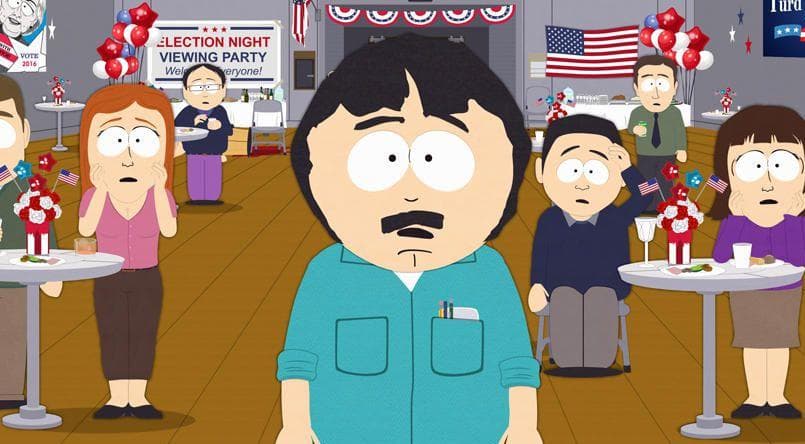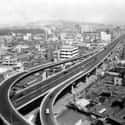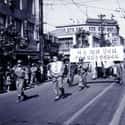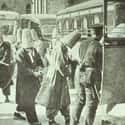(#1) From 1392-1910 Korea Was A Relatively Unified Kingdom
For nearly 5 centuries, the Korean Peninsula was ruled by the Joseon Dynasty with varying degrees of authority. The Joseon Dynasty arose after many years of decline on the part of the 400-year-old Goryeo Dynasty and a few years of nominal Mongol occupation. Long story short, an ambitious general named Yi Seong-gye staged a coup, and - after a few years of puppet rule - installed himself as the new King. Going by the moniker King Taejo, he moved the capital to Seoul (then Hanseong).
The Joseon Dynasty's power wasn't always absolute over their 500-year reign, however. In 1401, it became a tributary of Ming China. In 1592 and 1597, Japan invaded, but they didn't stay around long. In 1637, the Joseon lost a war with the newly established Qing Dynasty in China and was forced again to become their tributary.
By the end of the 19th century, the Joseon Dynasty was in decline. Both the Donghak peasant rebellion and increasingly untenable isolationist policies left the central government weak. At this point, both Chinese and Japanese forces increased their presence in Korea, leading to the First Sino-Japanese War (fought mainly on Korean soil). After Qing China's defeat at the hands of Japan in 1895, Korea then became a tributary of Japan.
(#7) Maoist China Intervened On The Side of North Korea
Just as the Korean War appeared to be over, China sent its armies into Korea in November 1950 to fight the UN forces. Even after initial attacks, the UN forces led by MacArthur continued to discount the size of the Chinese force, which was 300,000 strong. Overwhelmed by the human-wave tactics used by the Chinese Communist forces, UN forces were turned back in disarray.
By the beginning of the new year, they were defending a line south of Seoul. The line held, however, and the UN forces were again able to push north to the 38th parallel.
(#6) In 1950, Communist North Korea Invaded The South
Seeing the success of Mao in China, Kim Il-sung decided to embark on a Korean reunification effort. In June, thousands of troops, armed with Russian tanks, guns, and planes, flooded over the 38th parallel, marking the beginning of the Korean War.
The newly formed United Nations Security Council then branded the North as the aggressor. The British Far East Fleet was drawn into service, and the US began sending in troops. The North's advance was stopped at the port city of Pusan. As reinforcements arrived, UN forces pushed northward. Under the command of MacArthur, UN forces were granted permission to cross the 38th parallel and attempt to reunify Korea as the Republic of Korea. By the end of October, they controlled most of the Peninsula.
(#11) Capitalism Took A Firm Hold In South Korea
Even as democracy was floundering, capitalism was making great strides in South Korea. While the country could hardly be described as a free market in the years after the Korean War, their brand of state-controlled capitalism managed to transform the country from a poor, rural country to a prosperous, modern nation.
A focus on export production helped drive growth in South Korea during the 1960s and beyond, and while there was still corporate rent-seeking and favoritism, it was manageable. Interestingly, the authoritarian nature of the government insulated it from regulatory capture by special interests. Ultimately, the growth witnessed during the period (7% per year) provided a high level of prosperity and stability to the country.
(#10) Democracy Took A While To Take In South Korea
Even after the War, problems in South Korea continued. President Syngman Rhee used a 1949 national security law to close newspapers and silence critics. By 1960, his corrupt administration was facing riots, forcing him to resign.
The riots continued, however, and, in 1961, the army staged a coup, placing General Park Chung-hee as the ruler. Martial law was declared until 1963 when elections were held, with the General winning. He ruled until he was assassinated in 1969. Again the army stepped in with General Chun Doo-hwan declaring martial law.
In the late 1980s, turmoil again began brewing. In response to criticism by Christian leaders and mass demonstrations, General Chun stepped down in 1988. Democratic Elections were held, and General Roh Tae-woo was elected President. By the 1990s, democracy had stabilized.
(#2) Korea Was A Colony Of Japan From 1910 To 1945
Nominal Japanese rule over Korea actually began after the First Sino-Japanese War in 1895, when Korea essentially changed from a tributary of Qing China to a tributary of Japan. From the start, the Japanese systematically imposed rule on the declining Joseon Dynasty. This culminated in the Japan-Korea Annexation Treaty of 1910, in which the Emperor of Korea formally ceded all authority to the Emperor of Japan... though he refused to sign it himself and instead sent an ambassador to Japan on his behalf.
For the first 10 years, Japan imposed harsh military rule on the new colony. In 1919, a nationwide protest demanding independence was met with overwhelming force. Different estimates place the number of protesters killed at between 553 and 7,509. After the incident, the Japanese revised and somewhat relaxed their policy of rule. Korea was rapidly modernized and industrialized in order to provide Japan with goods and resources to fuel their expansionism.
During the latter part of the 1930s, as Japan mobilized for war, conditions again became harsh. The Japanese decided to try to assimilate the Koreans, teaching school in Japanese. Koreans were made to adopt Japanese names, and after 1938, schoolchildren were actually forbidden to speak Korean. Efforts were made to eradicate native Korean culture, and Shinto was introduced, but it didn't take.
New Random Displays Display All By Ranking
About This Tool
After Japan surrendered in 1945, the Korean peninsula was bounded by the 38th parallel north and received by the Soviet Union and the United States. With the support of the United States and the Soviet Union, South Korea was established in the southern Korean peninsula in August 1948, and the Democratic People’s Republic of Korea was established in the north in September 1948.
The Korean peninsula was unified for centuries after the Joseon Dynasty, and they shared the same language and basic culture. However, in the past years, the north and south have been divided into two countries along a 38 degree north latitude. The random tool explained 12 historical reasons why there are two countries.
Our data comes from Ranker, If you want to participate in the ranking of items displayed on this page, please click here.
















